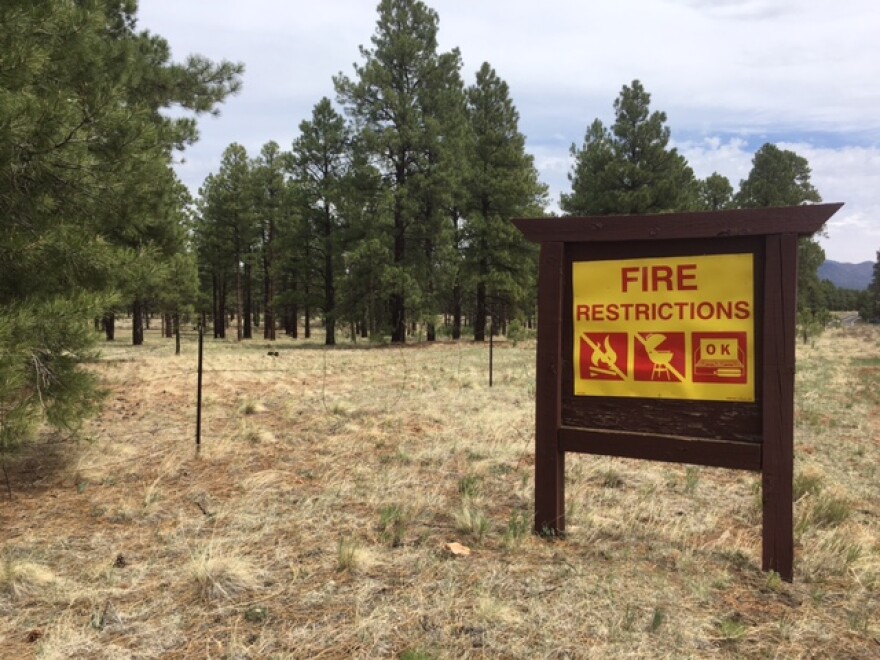Local, county, state and federal agencies have implemented fire restrictions throughout northern Arizona as hot and dry conditions increase.
Fire restrictions are intended to help prevent human-caused fires and to limit the exposure of visitors during periods of potentially dangerous conditions. They will typically remain in effect until the area receives significant, widespread precipitation. Violators could face fines or jail time.
Rules on things like campfires, smoking and welding can differ from one forest to another. It's critical to check what's allowed where.
There are three levels of fire restrictions. Stage 1 Fire Restrictions typically limit campfires to developed recreation areas. Stage 2 usually bans all fires while Stage 3 can include closing an area to public access.
Where are Stage 1 Fire Restrictions in effect?
Agencies can tailor restrictions to fit specific needs. Generally, under Stage 1 Fire Restrictions:
- Wood and charcoal fires are allowed only in developed campgrounds and picnic areas.
- Smoking is permitted only indoors, in a vehicle or developed recreation site.
- Stoves, lanterns and devices that run on liquid petroleum or liquid petroleum gas can be used if they can be turned on and off and are operated in areas where flammable materials are cleared within a 3-foot range.
- Rules on discharging a firearm, air rifle and gas gun can vary.
Most entities have lowered restrictions as the region received an early burst of monsoon rain that increased fuel moisture levels and decreased wildfire danger.
The Coconino, Tonto and Prescott national forests are in Stage 1 as well as Coconino, Gila, Navajo and Yavapai counties. Same with the Bureau of Land Management and State Trust lands in Gila, Mohave and Yavapai counties.
The northern portion of Kaibab National Forest has returned to Stage 1. Southern districts will remain without restrictions.
Grand Canyon National Park is in Stage 1 as fire danger remains high on the South Rim and very high on the North Rim.
Stage 1 Fire Restrictions are in effect across the Navajo Nation. Open fires are prohibited outside developed sites and fireworks cannot be used, sold or even possessed anywhere on the reservation. Ceremonial fires are allowed if registered ahead of time with the tribe’s Environmental Protection Agency.
Welding and using acetylene torches and other open-flame devices are also prohibited.
Stage 2 Restrictions
Stage 2 Fire Restrictions generally ban all campfires. Here's what else is typically prohibited:
- Igniting, building, maintaining or using a fire, including charcoal, briquettes, smudge pots and wood stoves.
- Smoking outside.
- Blasting, welding or operating an acetylene or other torch with an open flame.
Agencies can adjust restrictions to fit their needs, so check their website or social media for specifics.
Violations could result in a mandatory federal court appearance, fines and jail time. Restrictions and closures typically remain in effect until the area receives significant, widespread precipitation.
Stage 3 Fire Restrictions
Under Stage 3 fire restrictions, the area is closed to the public due to extreme fire danger.
No areas are currently under Stage 3 restrictions.
This is a developing list last updated on Aug. 8, 2024. Additional information will be added as it becomes available.



